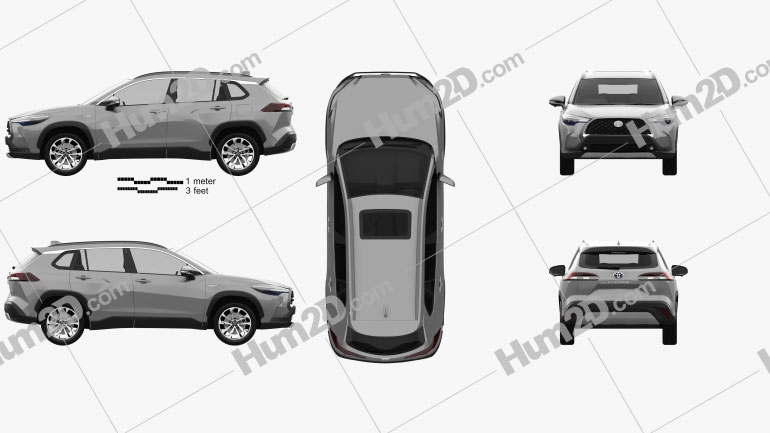Clipart desig lesson: Toyota Corolla Cross 2020All this resulted in a car with a walking chassis with a double-barreled bumper. According to the idea, the Toyota Corolla Cross 2020 is piloted by two people. I have more or less formed an idea in my head and I realized what I want. The first thing I will do is to develop the chassis. This is one element which requires a lot of attention. After all, it's present on the vehicle image in as many as four instances and is an active propulsion mechanism. And so I started sketching the approximate shape of the future limb. This type of chassis will keep it stable even in case of one of the limbs loss (due to its wide horizontal travel), though it will probably lose the ability to fire on it (just because it won't get "belly-up" on the ground), but it will be able to escape from the unsafe territory. Of course there will be a significant loss of speed. Although I seriously doubt that this feature would be implemented in the best clipart, such as MAN TGX truck Now we can work out the component and deal with the details of the Toyota Corolla Cross 2020. Here I'm going to take a digression and talk about the details of the car. As I said before, it's the functionality that matters in the concept. You don't want to fill up all the available space with details. It's important to understand where you need them, and where you don't. Below I will give some typical mistakes, which are often made by many beginners.
clipart via hum2d One of the most common mistakes is a lack of understanding of what a skin is. A person starts randomly putting seams on the hull - not paying attention to the shape. The pieces of cladding should fit together, not cut into a random shape. The second mistake is the misuse of identical elements - the so-called copy-paste. Each element should be in its proper place. Especially if it is a complex component that attracts attention. The man drew an element and it seemed to him good. He began to place it on the vehicle wherever you can - quite common with beginners. You need to control such placement, like we did it in G-Wagen clipart. The next mistake is trying to fill the space with random geometry. This is not a very good attempt to unthinkingly increase the detail. Geometry should follow the shape of the apparatus, should have a convincing function and should not randomly overlap. Even if the object is supposedly assembled from improvised means, there should be some visual and logical justification of how and what is attached to what. Skillful distribution of your technological base of elements will allow you to create a more rational apparatus. Elementary base is like a vocabulary. The more you read, work with text, communicate, the more vocabulary you will possess. It's the same here. I often recommend to look at real examples of various techniques, as well as the work of craftsmen, so as to have a clearer idea of the technical side. Now let's continue working on the limbs of the car clipart. I made a couple of flat sketches for myself and decided on the functions. On the frontal part of the leg there is an oblique section of solid armor, which is backed by brackets bolted down with fairly powerful bolts. This will give an image of protection. The wheels themselves have quite powerful hydraulics. Of course, this is not randomly placed. We have tried to imagine the movements of the future leg. Also made a functional distinction between the rear wheels and the front wheels. The rear lower leg has a reinforced stop, which can carry additional stability and persuasiveness when shooting. The wheels themselves also carry an active defensive function - an optronic suppression complex that consists of a rotating rounded camera sensor (the camera allows the car pilots to observe the terrain from all sides, and a sensor is a sensor in Africa) and two packs of missiles / grenades that can perform both defensive and attacking function. Everything is clear with the attacking one - the usual missiles with warheads. The defensive one, on the other hand, works like this car. When targeting a Toyota Corolla Cross 2020 with laser-guided homing missiles, the camera-sensor informs about the danger of missile targeting. Here we have a choice - if the pilot is a player, then either he has to take action himself, or the automation takes action. In general, this is not the point and refers more to the gameplay part. In any case the Rocket Pod, mounted in the lower part of the leg, opens up a flap, from which a grenade is fired in a threatening direction, which explodes and creates a dense aerosol cloud that completely absorbs the car. As a result, the enemy missile goes off course and loses its target. |

